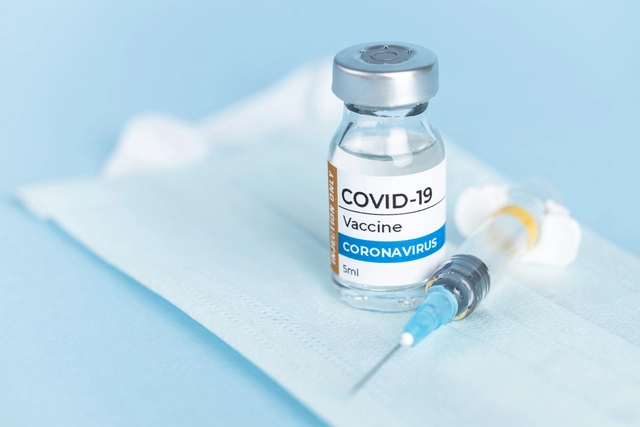How Desonide is Changing the Landscape of Topical Steroid Treatments
Have you ever been wary of using strong topical steroids because of the side effects they might cause? Enter Desonide, a mild corticosteroid that's making waves in skin treatments. For those dealing with pesky skin issues like eczema or psoriasis, Desonide offers a gentler option than its stronger counterparts. It's all about easing inflammation without putting your skin through the wringer.
Desonide stands out because it manages to be effective while minimizing potential risks. It's particularly appealing for anyone concerned about applying steroids on sensitive skin areas, such as around the eyes or on your face. So, what's the big deal with this little tube of cream? It's all about effectiveness with peace of mind.
- Understanding Desonide
- The Science Behind Desonide
- Benefits of Desonide in Skin Treatments
- How to Use Desonide Effectively
- Potential Side Effects and Precautions
Understanding Desonide
Desonide is one of those hidden gems in the world of topical steroids. It's classified as a low-potency corticosteroid, which means it packs enough punch to battle inflammation and irritation without the intense side effects often linked with stronger steroids. Doctors often suggest Desonide because it's versatile and gentle even on sensitive skin areas like the face.
What is Desonide?
This mild powerhouse is primarily used to treat skin conditions such as eczema, dermatitis, allergies, and rash. It's a synthetic steroid that helps reduce the action of chemicals in the body that cause inflammation, redness, and swelling.
How Does Desonide Work?
When you apply Desonide cream to the skin, it works by calming down the body's immune reaction and reducing swelling. It acts almost like a fire extinguisher for skin flare-ups. The best part? You can use it in areas other creams wouldn’t dare go—like around your eyes or other sensitive spots.
Where to Use Desonide
You might be wondering, "Where exactly can I use this?" Glad you asked. Desonide is usually applied to areas where the skin needs a gentle touch. Here's a quick list:
- Facial areas
- Folds of the skin (like elbows and knees)
- Anywhere with thin or sensitive skin
Forms of Desonide
It comes in a few different forms, so you can pick what works best for you—creams, lotions, and foams. Each has its own unique benefits depending on your skin type and the area you’re targeting.
Did You Know?
Here's a practical nugget: According to recent data, the global use of low-potency steroids like Desonide is on the rise due to their safety profile compared to high-potency alternatives.
In short, Desonide is like the trusty sidekick for your skin, helping reduce symptoms without the worries of going overboard.
The Science Behind Desonide
Okay, let’s dive into what makes Desonide tick. First off, it's a mild steroid, which means it's classified as a low-potency corticosteroid. This is a big deal because strong steroids often come with side effects that aren’t exactly fun.
Desonide works by binding to specific receptors in your skin cells. Once it's in there, it gets busy reducing inflammation. It tackles the redness, the itching—basically all the stuff you want gone when your skin is acting up. By dialing down the immune response, it helps calm things without the drama of thicker steroids.
The Molecular Structure
In terms of its makeup, Desonide is part of the glucocorticoid class. These are synthetic versions of hormones that naturally occur in your body. The key here is its structure, which allows it to target the problem areas more gently.
FDA Approval and Standards
For the science buffs out there, here’s a fun fact: Desonide got its FDA thumbs-up in the early '70s. It's been around the block a few times, but its safety profile means it’s still a trusty sidekick for dermatologists everywhere. It competes well against stronger options without putting your skin through the same level of stress.
Research and Development
Researchers have been pretty busy understanding how Desonide cream, in particular, interacts within the body to ensure that effectiveness isn’t just theoretical. Studies show that in trials, users experience significant relief from symptoms with fewer risks of thinning skin, a common issue with high-potency alternatives.
In short, the magic of Desonide lies in its low-potency approach, making it ideal for everyday heroes facing skin challenges. So, if you've been on the fence about topical steroids, this little marvel might be a good fit.

Benefits of Desonide in Skin Treatments
When it comes to managing skin conditions like eczema, psoriasis, or dermatitis, Desonide is quickly becoming a go-to solution for many dermatologists and patients. Why? Because it offers a solid mix of effectiveness without the heavy-duty side effects that can come with stronger topical steroids.
Gentle Yet Effective
One of the main reasons people turn to Desonide is for its mild nature. It's known as a low-potency steroid, making it a safer choice for everyday use. You can apply it to sensitive areas like the face or skin folds without worrying too much about thinning skin or other common issues related to more potent steroids. Essentially, Desonide offers that sweet spot between power and safety.
Reduced Side Effects
Unlike higher-strength corticosteroids, Desonide is less likely to cause severe side effects, which is a huge win for users. This also means it's more suitable for long-term treatment plans, allowing users to manage their symptoms without having to constantly change medications. Not only does this improve quality of life, but it also reduces the anxiety and hassle of continually trying new treatments.
Versatility and Accessibility
The cream is versatile and can be used to treat an array of inflammatory skin conditions. Plus, it’s available both as a prescription and over-the-counter in some areas, making it more accessible for those in need. Its affordability also makes it a popular choice among patients looking for cost-effective treatments that don't compromise on quality.
Ease of Use
The application process is straightforward. It’s as simple as applying a thin layer to the affected area usually twice a day. This simplicity in use builds higher compliance rates among patients, which often translates to better outcomes in managing their conditions.
For those tired of the constant trial-and-error with skin treatments, Desonide provides a reliable option that’s grounded in both safety and effectiveness.
How to Use Desonide Effectively
So, you’ve got your hands on Desonide, and you're ready to take charge of your skin troubles. Here’s the lowdown on using it right, ensuring you get the best out of this nifty treatment without any hiccups.
Application Guidelines
First things first, cleanliness is key! Always wash your hands and the affected area gently with soap and water. Pat dry with a towel. Once you’re all set:
- Squeeze a small amount of Desonide cream onto your fingers.
- Apply a thin layer over the trouble spot. You don’t need to slather it on; a little goes a long way.
- Rub it in gently until the cream disappears.
Repeat this routine twice a day unless directed otherwise by your doctor. Getting into a habit can make a world of difference.
Important Reminders
Here are some handy things to remember:
- Avoid covering the treated area with bandages or wraps unless advised by your skin doc. Skin needs to breathe!
- Keep away from eyes, nose, and mouth. Desonide is potent, and these spots are extra sensitive.
- If you're using other skin products, wait about 30 minutes before applying anything else over Desonide.
And here's a little pro tip: Don't shy away from setting a reminder on your phone for application times. It’s amazing how tech can help keep our skin game strong!
When to Call Your Doctor
Though Desonide is pretty amicable with most skin types, keep an eye out for any unexpected reactions like increased redness or swelling. If your skin seems angrier than before, it’s time to ring up your dermatologist.
A bit of effort and care can make Desonide your skin’s trusty sidekick. Use it wisely, and you might just find your skin woes easing up day by day.

Potential Side Effects and Precautions
Even though Desonide is known for being gentler than most other topical steroids, it's not completely free from side effects. A little redness, itching, or burning might pop up when you first start using it. These are usually mild and tend to fade away as your skin adjusts. But if they stick around, it's worth chatting with your dermatologist.
One rare but possible side effect with prolonged use of Desonide cream is skin thinning. That's why it's usually recommended for shorter periods. Keeping an eye on your skin's response is key, especially if you plan to use it on sensitive areas like your face or neck.
Areas to Avoid
Try to steer clear of using Desonide on open wounds or infected skin. It can make those situations worse, which is definitely not what we want. And while it's relatively safe, avoid getting it in your eyes—trust me, the stinging isn't fun!
Precautions for OTC Use
If you're using Desonide without a prescription, exercise caution. It's always a good idea to start with a small test area on your skin before applying it more broadly. Keep an eye out for any lingering irritation.
Quick Tips for Using Desonide
- Always wash and dry your hands before and after applying.
- Apply a thin layer on the affected area—don't overdo it.
- Follow your dermatologist's guidelines about usage duration.
- Avoid covering the treated area with bandages unless directed by a doctor.
In all, Desonide provides an accessible and effective option for tackling stubborn skin conditions. Just remember, respecting its use can keep your skin in check without throwing a wrench in the works.







19 Comments
Melissa Jansson
February 20, 2025 at 11:34
Honestly, the hype around Desonide feels like a manufactured trend-everyone’s rushing to label it as the panacea for dermatitis while ignoring the underlying pharmacodynamics that still demand caution. The low-potency label is jargon‑laden, but it masks the fact that receptor affinity remains a double‑edged sword, potentially triggering compensatory pathways. In practice, you’ll find that the “gentle” narrative is more marketing gloss than empirical truth, especially when physicians prescribe it for delicate facial zones without robust longitudinal data.
Max Rogers
February 25, 2025 at 12:54
That’s a solid point, but let’s also acknowledge the real‑world benefits many patients experience. Desonide’s milder profile does tend to reduce the incidence of skin atrophy compared to high‑potency steroids. When used as directed-thin layer, twice daily-it can effectively manage flare‑ups without the heavy side‑effects, which is a win for adherence. So while we keep an eye on the data, the pragmatic outcomes are encouraging.
Louie Hadley
March 2, 2025 at 14:14
I hear both sides, and I think the key is balance. Desonide offers a middle ground that can be especially useful for people with sensitive skin who have been burned by stronger steroids. It’s not a miracle cure, but as part of a comprehensive skin‑care regimen it can help keep inflammation in check while minimizing risk.
Ginny Gladish
March 7, 2025 at 15:34
From an analytical standpoint, the pharmacokinetic profile of Desonide warrants a nuanced discussion. Firstly, its low lipophilicity translates to limited dermal penetration, which correlates with the reduced iatrogenic thinning observed in clinical trials. Moreover, the molecule’s affinity for glucocorticoid receptors remains sufficient to trigger downstream anti‑inflammatory cascades without over‑stimulating catabolic pathways. This delicate equilibrium is reflected in the median time to symptom resolution, which consistently falls between five to seven days across a heterogeneous patient cohort. Additionally, the adverse event spectrum appears compressed; incidences of perioral dermatitis or steroid‑induced rosacea are markedly lower than with class‑III corticosteroids. When examining the meta‑analysis data, the heterogeneity (I²) is modest, suggesting a reliable effect size across studies. Nevertheless, vigilance remains essential: prolonged usage beyond the recommended two‑week window may still predispose to epidermal barrier compromise. Clinicians should therefore couple Desonide therapy with barrier‑restoring emollients and schedule periodic reassessments. In summary, the evidence underscores Desonide’s suitability for mild‑to‑moderate eczematous conditions, especially in anatomically sensitive zones, while reminding us that “mild” does not equate to “risk‑free.”
Faye Bormann
March 12, 2025 at 16:54
While many are quick to crown Desonide as the ultimate solution, I’d argue that the enthusiasm is a bit premature. The drug’s limited potency may be insufficient for chronic plaque psoriasis, and some dermatologists report suboptimal response in thicker plaques. Still, for facial eczema, it might be a pragmatic choice, provided patients understand its scope.
Kathy Butterfield
March 17, 2025 at 18:14
Desonide works great for my rash! 😊
Zane Nelson
March 22, 2025 at 19:34
Indeed, the clinical discourse often overlooks the nuanced stratification of corticosteroid potency. While Desonide may appear modest, its formulation-particularly the foam variant-optimizes drug delivery to epidermal layers, thereby enhancing efficacy without compromising safety. This pharmacotechnical advancement subtly redefines its therapeutic index.
Sahithi Bhasyam
March 27, 2025 at 20:54
Wow!!! Desonide sounds like a real game‑changer!! :) But!!! i think it’s also really important to test it on a small patch first! ;;; and always read the instructions !!! 😅
mike putty
April 1, 2025 at 23:14
I’ve tried Desonide for a month and saw a noticeable reduction in itching. Keeping a consistent routine really helped, and I felt less anxious about flare‑ups.
Kayla Reeves
April 7, 2025 at 00:34
It’s concerning that some people treat any steroid as harmless. We need to maintain ethical prescribing practices and avoid normalizing over‑use.
Abhinanda Mallick
April 12, 2025 at 01:54
From a national health perspective, promoting Desonide as a low‑risk alternative aligns with our goals of reducing iatrogenic skin damage. However, the industry’s pushback on generic accessibility must be scrutinized; the price disparity could hinder widespread adoption, especially in underserved communities.
Richard Wieland
April 17, 2025 at 03:14
Concise: Desonide is a low‑potency steroid useful for mild eczema; apply sparingly, monitor, and stop if irritation worsens.
rachel mamuad
April 22, 2025 at 04:34
While the evidence is promising, we shouldn't overlook the possibility of tachyphylaxis with repeated use. A balanced approach that integrates moisturizers and intermittent breaks could mitigate such risks.
Amanda Anderson
April 27, 2025 at 05:54
Honestly, I was skeptical at first, but after a week of using the cream on my cheek, the redness calmed down dramatically. It feels like a small victory in the battle against eczema.
Carys Jones
May 2, 2025 at 07:14
People need to stop treating skin conditions like a fashion statement. Desonide is a medical tool, not a trend, and should be respected as such.
Roxanne Porter
May 7, 2025 at 08:34
In light of the data presented, I recommend incorporating Desonide into treatment algorithms for localized dermatitis, ensuring that patients are educated on proper application techniques and duration of therapy.
Jonathan Mbulakey
May 12, 2025 at 09:54
Philosophically, the adoption of milder steroids reflects a shift towards patient‑centered care, emphasizing quality of life over aggressive eradication of symptoms.
Warren Neufeld
May 17, 2025 at 11:14
I think Desonide offers a practical compromise-effective enough for flare‑ups but gentle enough for daily use.
Deborah Escobedo
May 22, 2025 at 12:34
For anyone starting Desonide, remember to apply a thin layer, keep the area clean, and stay consistent. This routine often leads to steady improvement without major side effects.